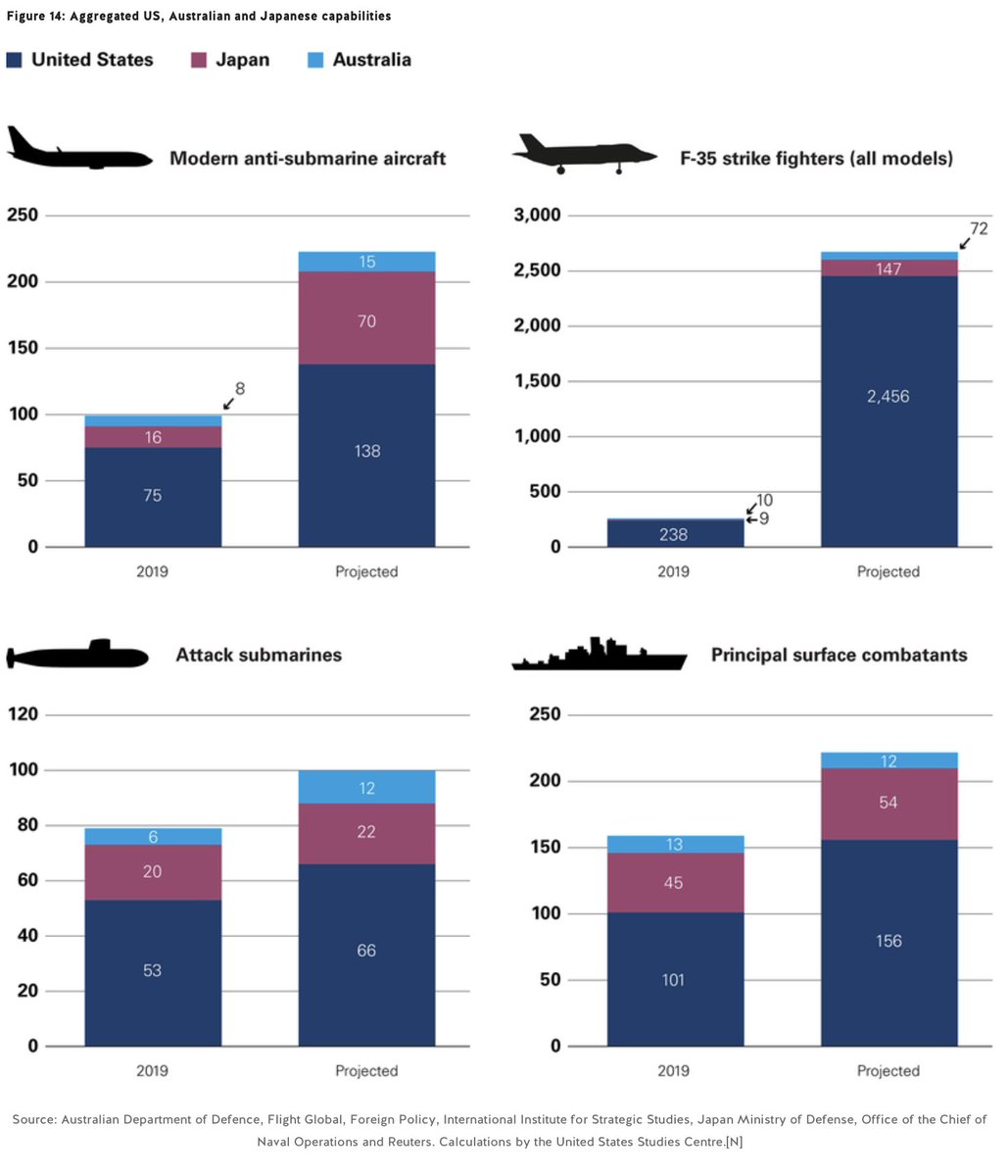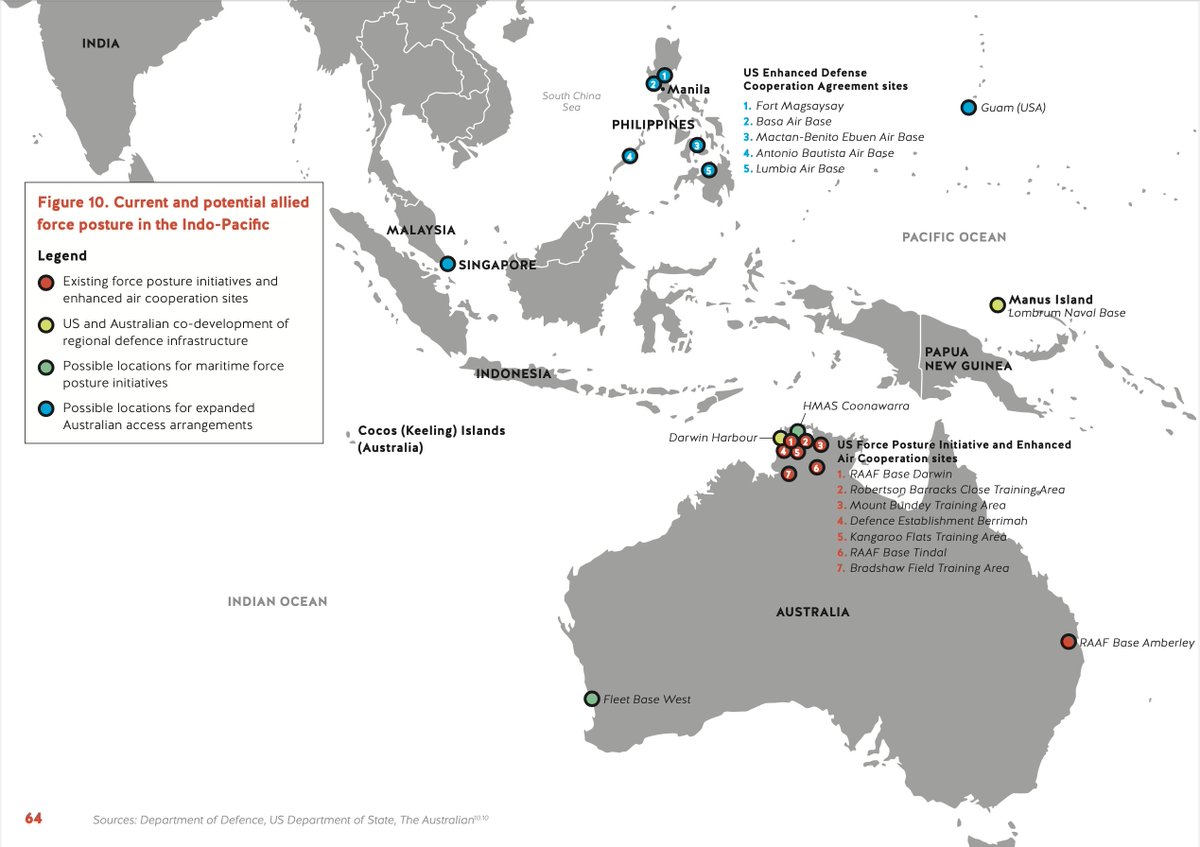
THREAD: After yesterday’s #AUKUS plan to deepen defence industrial base integration tailored to Indo-Pacific priorities, today's #AUSMIN presser signals an ambitious collective defence agenda — much of which we have recommended in @USSC reports. 1/
ussc.edu.au/analysis/state…
ussc.edu.au/analysis/state…

Big things flagged by Austin and Duton:
1) Major force posture initiatives to expand US access and presence in Australia
2) Agree to take immediate steps to improve interoperability through deeper integration
We cover extensively here: ussc.edu.au/analysis/avert… 2/
1) Major force posture initiatives to expand US access and presence in Australia
2) Agree to take immediate steps to improve interoperability through deeper integration
We cover extensively here: ussc.edu.au/analysis/avert… 2/
3) Reaffirmed our commitment to expanding multilateral efforts especially with Japan…and India
4) Greater air coop through rotational deployment of US military aircraft of all types through Australia
We also cover here: ussc.edu.au/analysis/state… 3/

4) Greater air coop through rotational deployment of US military aircraft of all types through Australia
We also cover here: ussc.edu.au/analysis/state… 3/


5) Establish combined logistics, sustainment and capability for maintenance to support our enhanced capabilities…incl for our submarines and surface combatants in Australia
We called for here: 4/ ussc.edu.au/analysis/avert…
We called for here: 4/ ussc.edu.au/analysis/avert…
6) Will be complemented by conducting more bilateral exercises and greater combined exercise engagement with partners in the region
Explored in our work on deterrence with @PacificForum, including this report: 5/ ussc.edu.au/analysis/opera…
Explored in our work on deterrence with @PacificForum, including this report: 5/ ussc.edu.au/analysis/opera…
7) Agreed to cooperate on the development of Australia’s guided weapons and explosive ordnance capability.
My former colleague @BrendanTN_ and I have called for this for some time, including in his report Ebbing Opportunity ussc.edu.au/analysis/austr… 6/
My former colleague @BrendanTN_ and I have called for this for some time, including in his report Ebbing Opportunity ussc.edu.au/analysis/austr… 6/
These seven lines of effort are critical to advancing collective deterrence in the Indo-Pacific. They support Australia's plan in 2020 Defence Strategic Update to contribute ambitiously to a stable regional order, which I write about for @IISS_org here: 7/
https://twitter.com/IISS_org/status/1403848845356843012?s=20
Looking forward to dissecting the 2021 #AUSMIN Communique shortly...! 8/8
• • •
Missing some Tweet in this thread? You can try to
force a refresh







